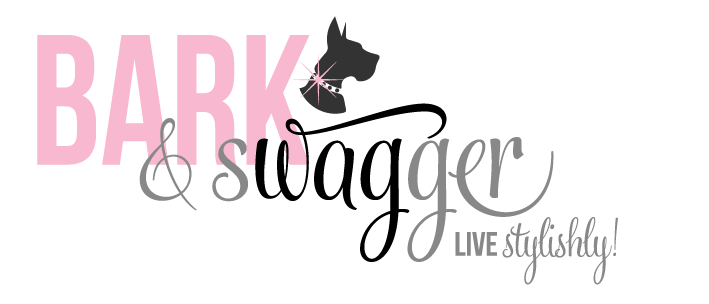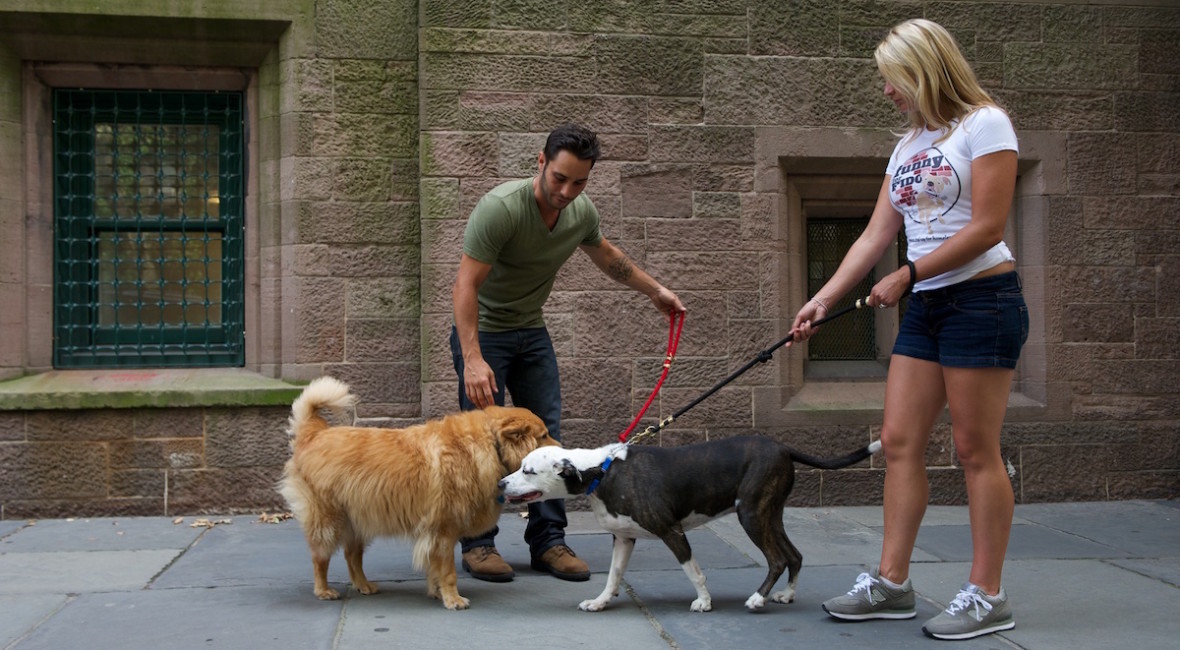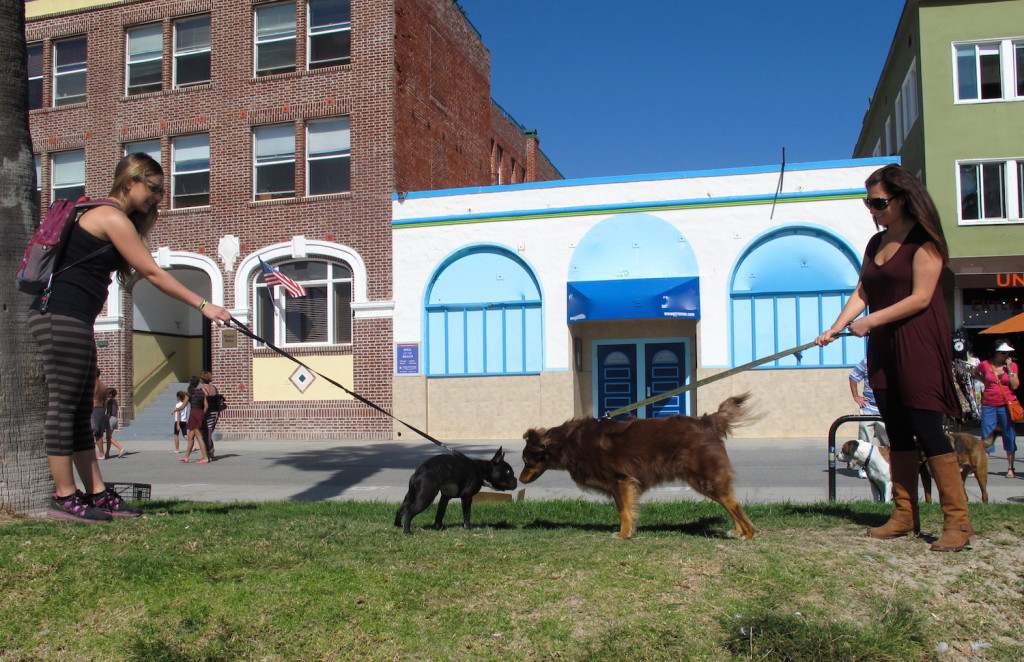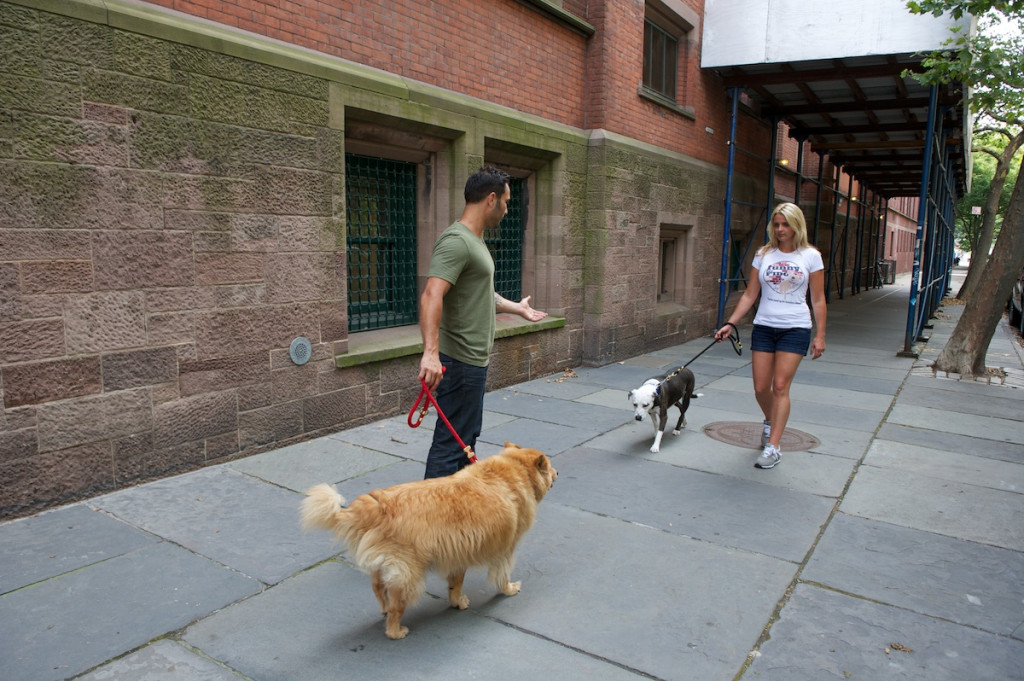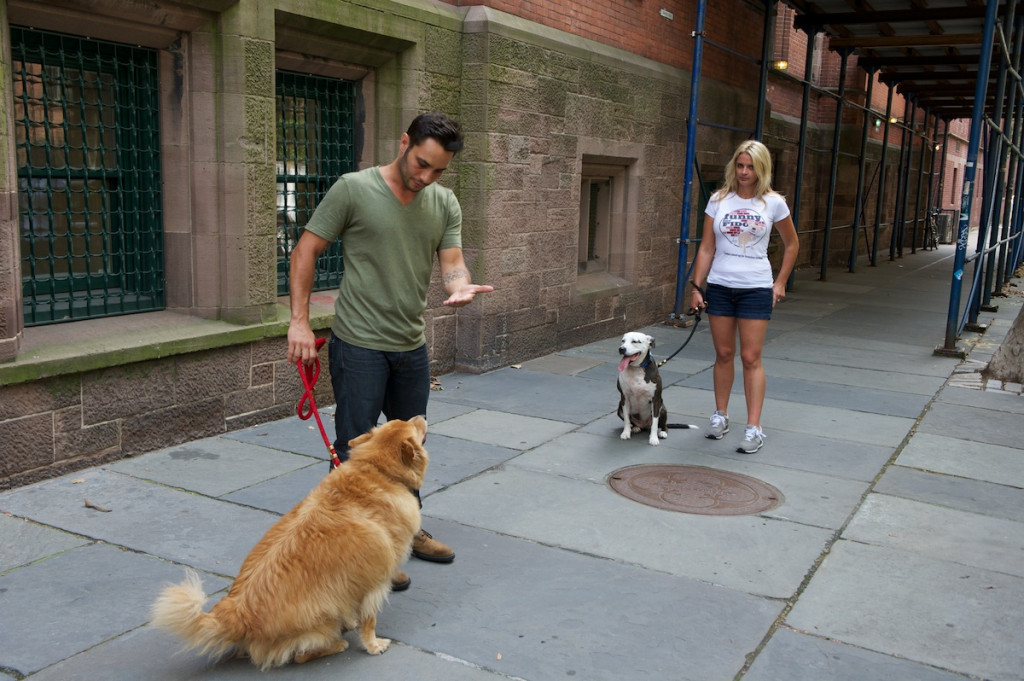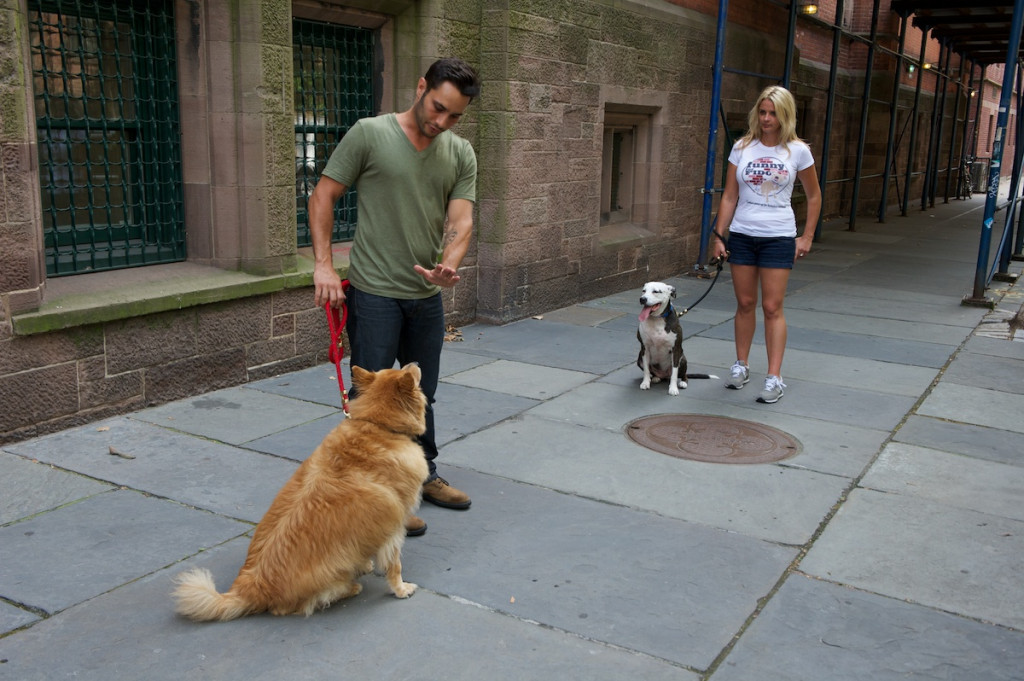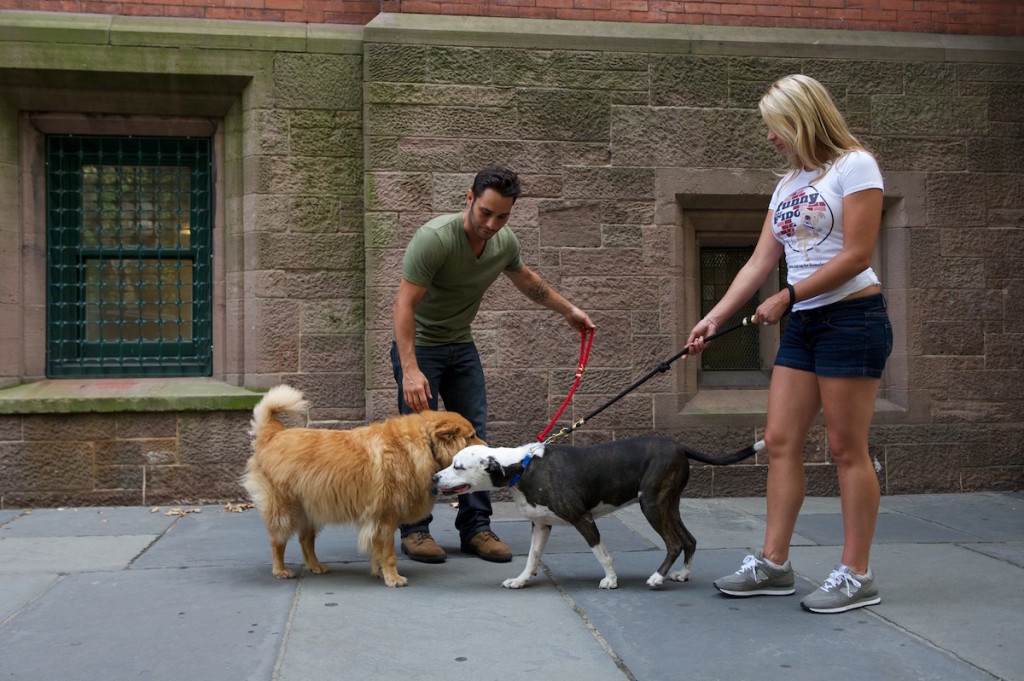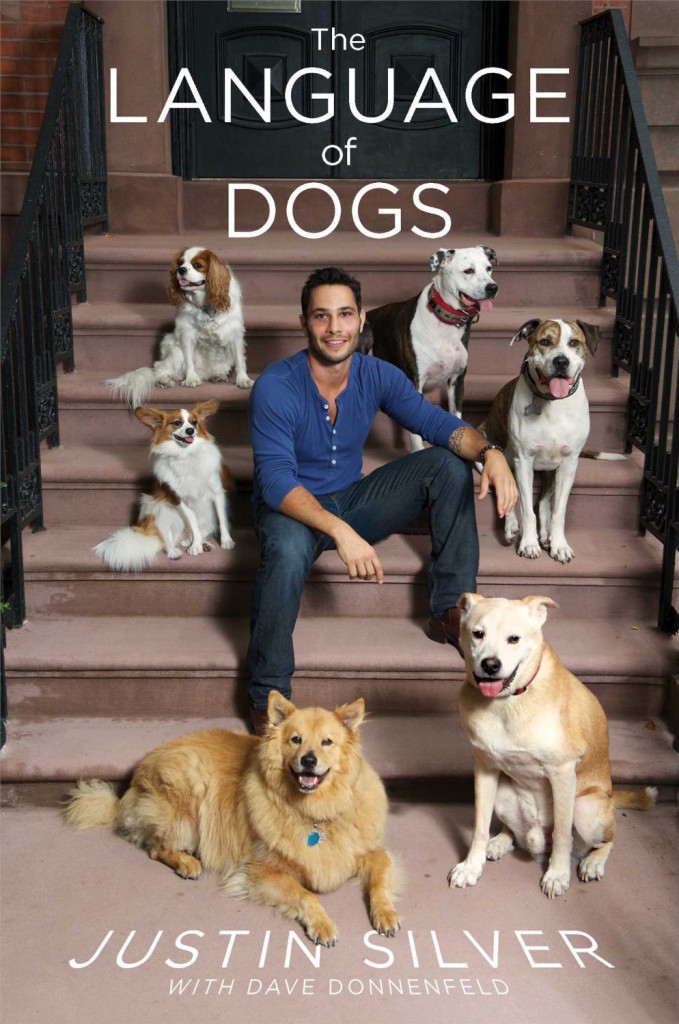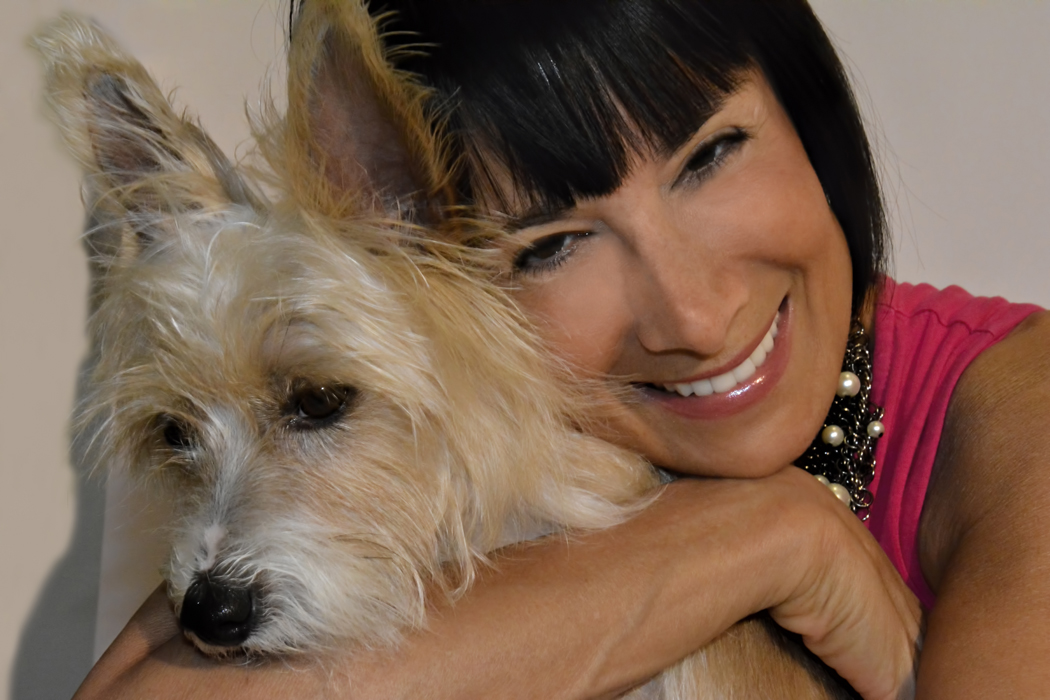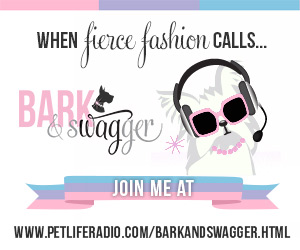Welcome to Week 6 of our Tuesdays with Justin training series. This week, Justin and Dave are tackling something I think a lot of us could use help with. Once I learned how to properly introduce my dogs to others, it made all the difference. Before, our rescue Jasper would lunge and shriek-bark at strange dogs. Now, 99% of the time, he calmly meets others, even when they aren’t as calm as he is. It’s been one of the key tips I’ve learned from Justin and I hope it helps you, too.
Remember, I’m giving away a copy of Justin and Dave’s new book, The Language of Dogs, each week to one lucky Bark & Swagger follower. See how to enter the giveaway at the end of the post.
Now, on to Week 6!
How to Properly Introduce Dogs OR The Long Hello
written by Justin Silver with Dave Donnenfeld
The Tipping Point
As we enter the second half of this series, we hopefully have a sense of how we impact our dogs’ behavior and the things that we, not our dogs, can do to make things go more smoothly.
At this juncture, I’d like to get a little more instructive and address the dog-on-dog introduction. So many dogs fail to get properly socialized and this single issue is the primary cause of innumerable subsequent problems. I can’t tell you how many dogs could have been saved from abandonment by some simple introductory protocols.
The good news is that very few people seem to know the etiquette in making canine introductions, so it’s usually not a case of “bad dog” syndrome, but more a case of learning the type of courteous behavior critical to socializing a dog. I am going to cater this post towards dogs that have been unpredictable around other dogs. The lengthier introduction may not be necessary for everyone, but the same principles apply, even if you get to the end result faster.
We Love Long Hellos
An on leash dog-on-dog introduction is like wading into a cold pool. It should be done gradually, until comfort is achieved at each depth along the way.
Here’s how you do it:
- A key rule is to use a short lead, 4-6 feet maximum. It should be secure in your hand, but not taut.
- In the beginning, only meet other dogs on shorter leashes, as well. Uneven playing fields can create leash aggression.
- With both dogs on leash, calmly say hello from roughly twenty feet.
- Move closer slowly and do not allow your dog to be reactive.
- Meeting other dogs and people is a privilege and dogs must demonstrate calm behavior and know how to sit and wait. Letting them wind up with excitement is bad manners that can lead to bad news.
- Look for stress clues, such as hackling (in which the hairs on the neck are raised) or pinning (fixating on the other dog or stiffness in the body).
- Don’t succumb to any leaps of faith. At any sign of stress, get more space between you, and redirect the dog’s attention onto you by having it sit.
- When the dog is calm, make your way over to your friend, little by little.
- Keep the dogs separated by both owners and shake hands with your fellow human, while the dogs sit. Should they not listen, reset and start again.
It is critical that you meet the other person and dog FIRST. You are your dog’s protector that determines what and whom is safe. When things are the other way around, dogs are on edge, stressed and prone to aggression.
- After you say hellos, lean over and let the new dog sniff your hand. Offer a pet under the chin.
- Once the humans feel comfortable that it is safe for their dogs, they invite the pups in, in a controlled, easy manner. We then monitor.
For reactive dogs:
- Keep the dogs on the outside and have everyone walk together.
- Signs to look for:
Dogs looking away.
Dogs attempts to engage their owners.
The dog pulls on the leash away from present company
If you come to a stop, the dog sits.
- If things are going well, let one person handle both leashes and walk them together.
- Once confident, allow the dogs to sniff each other from the back as dogs will rarely, if ever, attack from the back.
- Once comfortable, let the dogs briefly into each other’s space but not nose to nose. Monitor the intensity that they investigate each other. Slowly build up the time until they can freely socialize.
Dogs must socialize regularly if we expect them to behave normally in and around their house, let alone in the outside world. They must also learn that when they are on leash, it is not their job to monitor the outside world for threats. We can do that for them.
The Giveaway
Enter to win a copy of Justin & Dave’s new book, The Language of Dogs, a great dog training at home manual that’s easy to read and chock full of practical training tips that work. I reviewed it in an earlier post here.
To enter, just join the Bark & Swagger family! If you’re already a member, you’re eligible! The giveaway begins Tuesday, May 26 at 7am EST and ends Sunday, May 31 at 11:59pm EST. Each week, we’ll announce a new winner and start the giveaway again.
Week 5’s winner is Mary P. Congratulations, Mary!
To get more info, great tips and fun pictures, visit Justin on:
How is your dog at meeting others?
